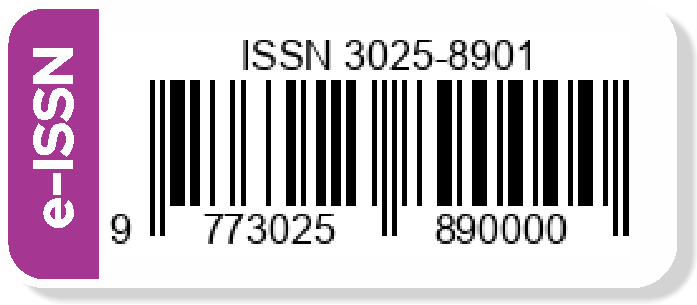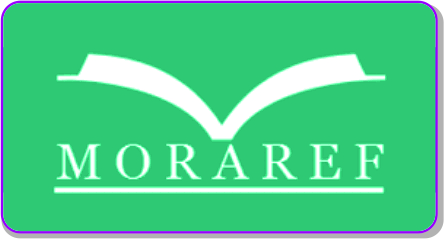Students' Social Adjustment: Effects of the Peer Environment
DOI:
https://doi.org/10.30983/bicc.v1i1.90Keywords:
Peer environment, social adjustmentAbstract
This research is entitled "Student Self-Adjustment: Effects of the Peer Environment" by Utri Raihani, NIM 2620022. Sjech M. Djamil Djambek State Islamic University Bukittinggi, student at the Faculty of Tarbiyah and Teacher Training, Guidance and Counseling Study Program . A phenomenon that transpires in classes X and IX served as the basis for this investigation. The author identified problems related to the peer environment in the cooperation index, namely the reluctance of some students to join groups to complete school assignments. The problem with the peer environment in terms of competition is that some students disappoint their peers by not appreciating their peers' achievements and by mocking or criticizing them. The problem related to social adjustment in terms of social attitudes and behavior is the reluctance of some students to take part in school. The problem identified is related to social adjustment in the sense of personal satisfaction with the behavior displayed, namely that there are students who do not accept their own shortcomings so they cannot get along well with their friends Determining the degree to which the peer environment affects students' social adjustment is the aim of this study. This research uses an associative quantitative approach. The population of this study consisted of 200 students, namely class X and XI students. The sample collection method for this research uses a proportional stratified random sampling technique, which is used when the population is homogeneous and spread out. To guarantee a homogeneous sample, each student in each class was selected by considering the number of students, student gender, and major, so that a total sample of 134 students was obtained. The Peer Environment Questionnaire and the Students' Social Adjustment Questionnaire were the tools utilized in this study to collect data. A straightforward linear regression test is the type of data analysis used to evaluate the study hypothesis. Studies reveal that social adjustment (Y) is 17.3% influenced by the peer environment (X). Other variables impact the remaining 82.7% of the population in the meantime (R2).Keywords: Peer environment, social adjustment
References
Anwar, M. Badiul. 2017. The Influence of Peer Attachment on Self-Adjustment of New Middle School Students at the Annur 2 Al-Murtadlo Bululawang Islamic Boarding School Poor.
Arifin, Zainal. 2014. Interpretation of Inspiration. Medan: Ambassador Azhar.
Asrori, Mohammad Ali and Mohammad. 2014. Adolescent Psychology of Student Development. Jakarta: PT Bumi Aksara.
Dradjad, Zakiah. 2011. Self-Adjustment. Jakarta: Bulan Bintang.
Fatimah Enung. 2010. Developmental Psychology. Bandung: CV Pustaka Setia.
Halin, Hamid. 2018. The Influence of Product Quality on Customer Satisfaction of Semen Baturaja in Palembang at PT. Semen Baturaja (Persero) Tbk. Global Ecoment Journal. Vol. 3. No.2.
Hastuti, Novita Puji. 2015. The Influence of Peer Environment on the Social Adjustment of Students at SMP N 2 Surakarta." Core 1. Vol. 1.No. 1.
Hurlock, Elizabeth B. 2010. Developmental Psychology. Jakarta: Gramedia Pustaka Utama.
Purnomo, Rocmat Adi. 2017. Economic and Business Statistical Analysis with SPSS. Ponorogo: CV. Wade Group.
Republic of Indonesia. 2006. Law of the Republic of Indonesia no. 14 of 2005 concerning Teachers and Lecturers & Law of the Republic of Indonesia no. 20 of 2003 concerning the National Education System. Bandung: Permana.
Roesmala, Fransisca Iriani. 2019. Self-Regulation Ability Intervention. Yogyakarta: CV. Andi Offset.
Santoso. 2010. Group Dynamics. Jakarta: Bumi Literacy.
Schneiders, Alexander A. 2010. Personal Adjustment and Mental Health. New York: Holt, Reinhart and Wintons.
Shaleh, Abdul. 2011. Psychology An Introduction from an Islamic Perspective. Jakarta: Kencana.
Siregar, Syofian. 2017. Quantitative Research Methods: Equipped with Comparisons Manual & SPSS calculations. Jakarta: Kencana.
Slavin, Robert E. 2011. Educational Psychology and Practice. Jakarta: Permata Putri Media Index.
Susanto, Ahmad. 2015. Guidance and Counseling in Kindergarten. Jakarta: Prenadamedia.
Syamsu Yusuf. 2010. Psychology of Child and Adolescent Development. Bandung: Rosdakarya Youth.
Utami, Dian Tri. 2018. The Influence of the Peer Environment on the Social Adjustment of Children Aged 5-6 Years. Journal of Early Childhood Islamic Education. Vol. 1. No. 1.
Wahyuni, Mia Apriani and Zulfa Indira. 2015. The Influence of Social Support from Peers and Friends Self-Regulation on Students' Self-Adjustment. Journal of Islamic Communication Media about Gender and Children. Vol. 1.No. 1.
Yosepha, Cruisetta Kaylana Setiawan & Yanthy. 2020. The Influence of Green Marketing and Brand Image on Purchasing Decisions for The Body Shop Indonesia Products. Progress Scientific Journal. Vol. 10. No. 1
Downloads
Published
How to Cite
Issue
Section
License
Copyright (c) 2024 Utri Raihani , Linda Yarni, Dodi Pasila Putra, Budi Santosa

This work is licensed under a Creative Commons Attribution-ShareAlike 4.0 International License.












